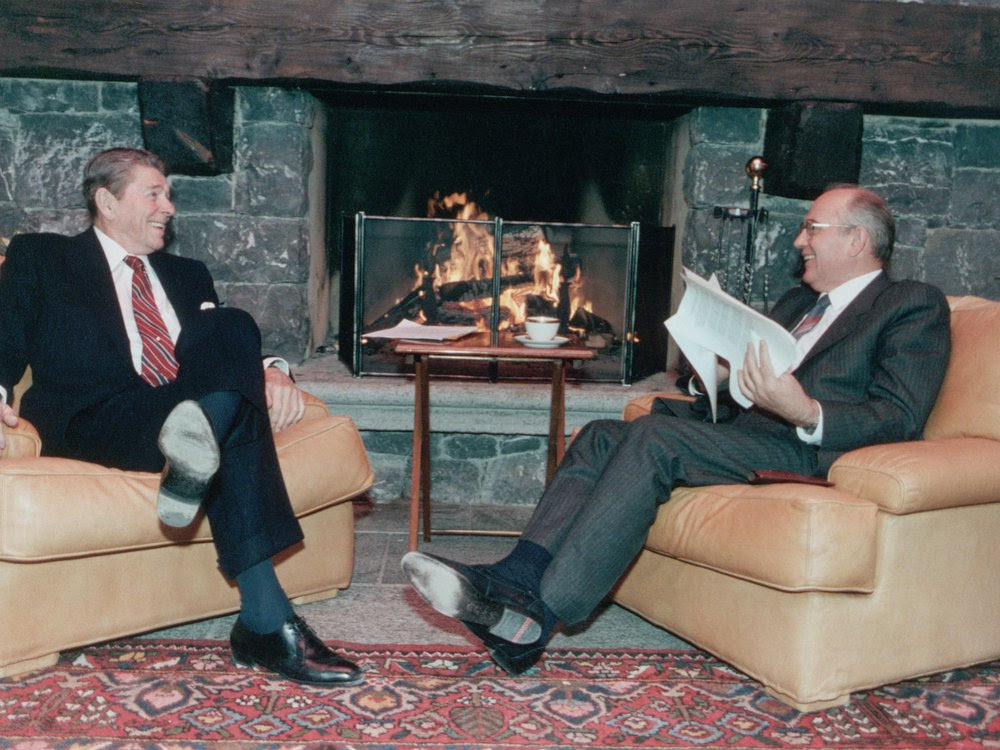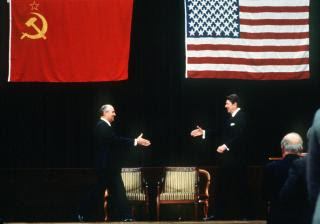Former presidents Reagan and Gorbachev buried decades of tension between their two countries to form one of the most unlikely personal relationships of the 20th century, born of their shared desire to reduce nuclear tensions and ultimately change the world.
The Russian, Gorbachev, originally had nothing in common with his American counterpart, Reagan, and the two men came from countries that had distrusted each other for decades.
In contrast, Reagan’s intelligence when he came to power in 1981 was to reduce nuclear tensions with Moscow.
He tried unsuccessfully to approach three Soviet leaders – Leonid Brezhnev, Yuri Andropov and Konstantin Chernenko – but they were opposed to any change, and none survived long enough to establish a relationship.
When Gorbachev became general secretary of the Communist Party in March 1985 after Chernenko’s death, the White House saw an opportunity, recalls Jack Matlock. The latter was then the chief US negotiator with the USSR, before becoming US ambassador to Moscow.
“At the beginning of his term, Reagan spoke of the USSR as an evil empire,” Matlock told AFP. “But from the beginning, he talked about negotiations and the possibility of peaceful relations if the Soviet leadership agreed to get along with the free world.“There was little reaction until Gorbachev. With Gorbachev, they finally established communications and two or three years later, they were almost on the same line,” he adds.
Gorbachev was not naive, notes John Lenczowski, Ronald Reagan’s top adviser on relations with the USSR. But the White House understood that the new Soviet leader inherited a weakened economy, a military that felt outgunned and threatened by the Pentagon, and a Communist Party that was being eaten away from within.
Gorbachev needed to improve relations with the United States to reform his country and preserve the Soviet Union, Lenczowski explains.
On the other hand, Reagan saw the Kremlin’s paranoia as dangerous for both countries.
“Reagan began to think that we needed to tone it down and try to manage relations with Moscow a little more gently.” recalls the former White House adviser. He realized that “we were in a strong position to negotiate with Moscow and had to explore different avenues.”
At Chernenko’s funeral, Reagan invited Gorbachev to come to Washington, but nothing happened for months. Yet the White House noted a change in tone when the two countries discussed nuclear disarmament negotiations.
“They were two men of peace,” Matlock notes. “Gorbachev understood early on that the system had to change but that he couldn’t change it as long as there was a Cold War and an arms race.
“I think Reagan understood that. And Reagan’s goal was not to dismantle the USSR.”
summit in Geneva, 1985
It was at a November 1985 summit in Geneva that the ice was broken. The discussions were tense and the results limited, but the two leaders had several face-to-face meetings, creating the beginnings of trust.
A year later, they met again in Reykjavík for further negotiations, without much result. The press called it a failure, but Jack Matlock recalls that the two sides found common ground.
When Gorbachev came to Washington in 1987, he and Reagan were able to sign a historic treaty on intermediate-range nuclear weapons.
At first, Gorbachev “thought Reagan was very conservative,” says the former ambassador. “But over time, as they increasingly agreed, they became friends.
Long after leaving politics, Mikhail Gorbachev returned to the US in 2004 to attend Ronald Reagan’s funeral.





Comment here